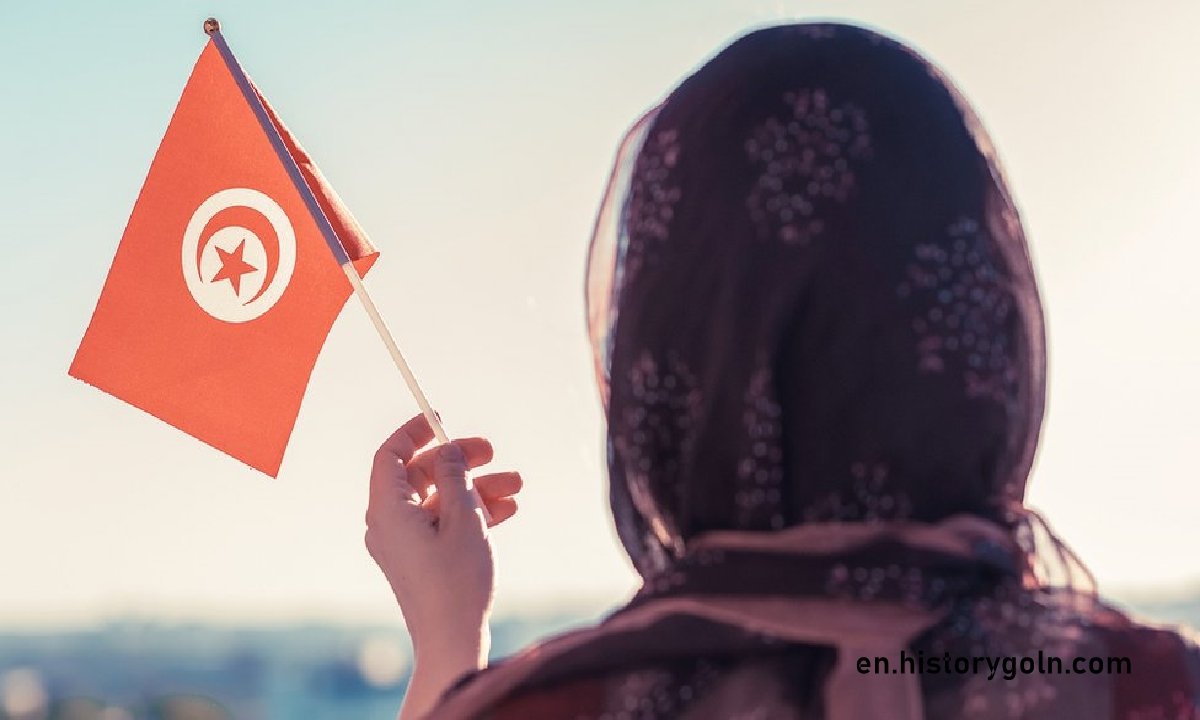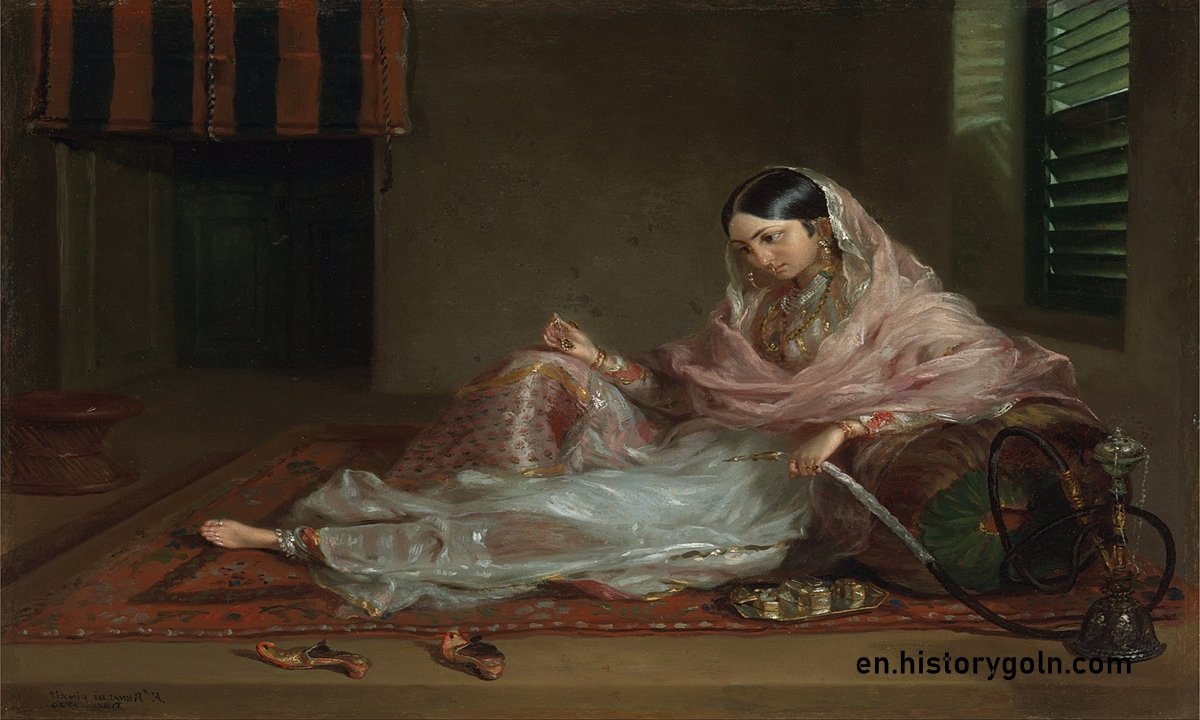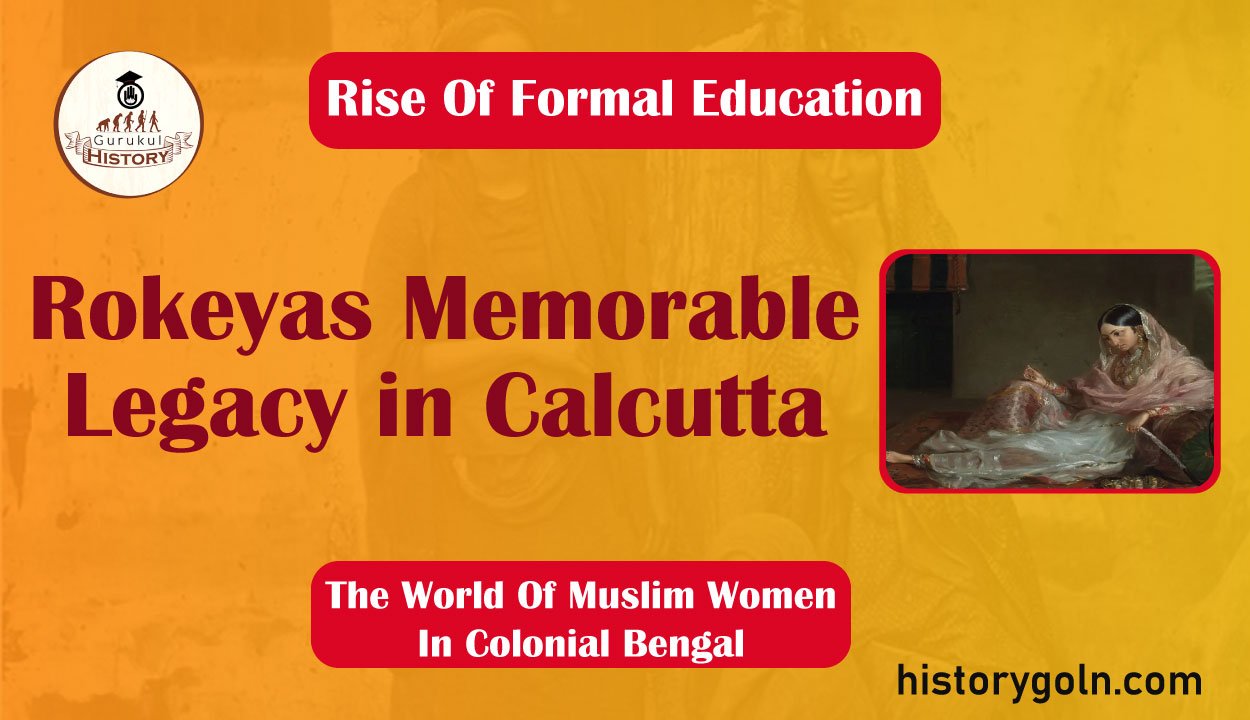Today our topic of discussion is Rokeyas Memorable Legacy in Calcutta .
Rokeyas Memorable Legacy in Calcutta

The first woman to systematically and ceaselessly launch the campaign for Muslim women’s education was Kokeya Sakhawat Hossein who set up a girls school with mengre resources, in Calcutta, in 1911. Shortly before this. Khujasta Akter Bano also known as Suhrawardiya Begum (1878-19191, had established a girls school in 1900 The Khujasta Akter Bano Memorial Girls’ School (which in 1938 was functioning as a non-government secon dary school).
Rokeya, however is acclaimed as one of Bengal’s very first Teminists, talong with Pandita Ramabai and Sarala Devi). Hokeya displayed a courage, vision and vigour that can only fill us with amazement today.
She was a writer, a theoretician, an educationist and social worker who can be ranked without doubt among the great architects of the Bengal Awake- ning. Rammohun or Vidyasagar, in the matter of education. Though it would be constricting to restrict her to the dubious glory of the ‘mahiyashi narf (great lady) who upheld Muslim women’s education (as is the wont of histo rians), it was in this sphere that she left her abiding mark.
Like other “liberal thinkers before and after her, she considered education the first pre-requisite for emancipation, as one essayist has commented: “She was the forerunner of our modern sensibility, our contemporary awareness, of our emancipated intellect, not just the pioneer of the women’s movement alone. a finest bloom of the Awakening in the Bengal.” But unlike the Renaissance liberals, the ventured into zones which criticized and trans- cended liberal ideology.
Like Faizannessa. Rokeya was born into a Zamindar family where it was unthinkable that girls would go to school. Rokeya herself recalled: “I never entered the precincts of a girl’s school or college What little I have learnt was due to my older brother’s love and care.
Rokeya’s father Zahir- uddin Abu Saber disapproved of Rokeya’s learning English or Bengali. But after nightfall she would take clandestine lessons by candlelight from her elder brother. Her elder sister Karimunnessa taught her the forbidden Bengali, and her husband Sakhawat gave lessons in English. Karimunnessa.
to whom Rokeya dedicated Motichur Vol II. was herself a poet whose poetry never saw the light of day. Turned out of house and home by her step daughter after her husb- and’s death. Rokeya moved to Calcutta and set up the Sakhawat Memorial Girls’ School on March 11, 1911 at 13 Waliulla Lane in a small classroom, with eight girls. The medium of instruction was Urdu and Rokeya lamented that even fourteen years after the founding of the school she was unable to open a Bengali section.
This more than anything reflects the Urdu anti- ence of sharif culture in Bengal, particularly Calcutta, at least the last vestiges of it. Anwara Bahar, who had later taught at Sakhawat Memorial herself, recalled: “The teachers in our school were all native Christian. Anglo Indian, Hindu or of non-Bengali Muslim origin. The only Bengali teacher was my aunt Begam Fatema Khanam.”
The Bengalicization of the Calcutta sharif was to occur later, when following the new logic of things, they bowed out or acculturated to the changed social order. But Rokeya had read the writing on the wall.
And she whose mother tongue was Urdu, saw to it that her other abiding legacy, Le her literary works, were executed in the language of the rising Muslim professional gentry, Bengali the language forged into its modern shape by Vidyasagar, Bankim and Rabindranath.
The small school in Waliulls Lane made great advances despite social censure, and governmental nonchalance. By 1914 the number of students had increased to 29. A letter from the school secretary Maulvi Syed Ahmed Ali in The Mussulman, June 9, 1911, testifies that the enrollment from respectable’ families was increasing.
Every year Hokeya added a class till Sakhawat became a high school in 1931. When Fatema Khanam came to teach at Sakhawat in 1927 she was the only Bengali bhadrowohila there. Fatema recorded her impressions.
There is no comparison of the elderly widow (Rokeya) with anyone else with regard to her efforts for the useless women of the Muslim community. The Koran. English, Bengali, Urdu, Persian, nursing, cooking, sewing, etc., all the essentials of a girl’s education are imparted here but the Bengalis lag behind. of 114 girls only 2 are Bengali.
Rokeya went from door to door, entreating guardians to send their female wards to her school, guaranteeing security and purdah by offering a covered transport for the girls.
Students recall a phaeton-garhi (horse drawn carriage) and a motor bus, both covered with curtains or shutters drawn, which took them to school and brought them back. Rokeya often mellowed her bold formulation of women’s emancipation as laid down in her earlier works by incorporating popular religious sentiment when she made public addresses with regard to female education and her school.

Thus in her presidential speech at the Bengal Women’s Education Conference in 1926, she said: There are signs of awakening among our Hindu sisters who have made great advances but Muslim women are still engulfed in darkness… The opponents of female education say that women will become wanton and unruly. Fie They call themselves Muslims and yet go against the basic tenets of Islam which accords women An equal right to education.
Though orthodox quarters attacked Rokeya whenever they could,” she did not lack supporters. Men and women of the Brahmo, Hindu and Muslim Community congratulated and encouraged her. Sometimes they provided direct material and moral support. Liberal dailies and periodicals such as: The Mussulman, Amrita Bazar Patrika, Mohammadi and Saogat, lauded her efforts.
Rokeya gave leadership to one branch of the renaissance. Pragmatism and secularism in place of spiritualism, a spirit of critical enquiry in place of unquestioning acceptance of tradition these were the characteristic of her thought.
In a recent study, its author describes the school in Calcutta as a link, however fragile, between the city based “Bengal Renaissance” and the Muslim Community,29 But her work in the Muslim Community itself. was unique. In that, first phase of the ‘nari Jagoron’. Rokeya’s school was the institution from which were to soon emerge many of the Muslim bhadro- mohila. Her school was both a symbol of women’s agency and will, and a reality representing what the symbol stood for.
“The generation Rokeya’s school helped create later left their indelible mark on the women’s awakening.-Rokeya’s work was carried on by Shamsunnahar Mahmud (1908-1964)- writer, teacher, social worker and a parliamentarian. Born in an enlightened family of Noakhali, her father was descended from Munshi Tamijuddin and hin son Fazlul Karim.
The latter was among the first generation of Bengali Muslim graduates. Her maternal grandfather Maulana Abdul Aziz was one of the founding members of the Musulman Suhrid Sammeloni. Nonetheless, her childhood was spent in the strictest purdah in Chittagong. The difference was times had changed, and Nahar’s perseverance succeeded in getting her formal degrees. At nine she was taken out of Dr. Khastagies girls school in Chittagong on grounds of purdah. Nahar reminisced:
How great were the number of students in that vast institution – and of these only three or four Muslims!… Amiyamakha, revalu- tionary Kalpana Dutt’s elder sister. Deshpriyo Jatindro Mohon’s sister-daughters of many illustrious families studied there… I had gone upto class VI when…I was taken out of school.
Nahar started her studies under a Hindu male tutor at home. A thick curtain separated them, to ensure purdah. Nahur passed the matriculation examination with flying colours, and braced herself for college. Kazi Nazrul Islam, rebel poet of Bengal, wrote her a stirring letter:
I suspect that whoever your guardian may be, cannot be touched by the 20th century enlightenment. Perhaps that is why you have to plead and weep to go to college. 32
Shamsunnahar did get admitted to Diocesan College in Calcutta.
The figure of the burga-clad housewife student (she had been married in the meantime) was often a source of amusement for the relatively more cosmopolitan women of Calcutta in that classy institution. However, Shamsunnahar surprised everybody by securing the 20th place among the students who had appeared for the L.A. examination under Calcutta University in 1938.
Shamsunnahar passed her B.A. with distinction in 1932and was accorded a civic reception by Rokeya’s Anjuman-i-Khawateen-i- Islam in the same year. In her address, Rokeya hailed Nahar’s passing the B.A. examination as an honour for women and prayed that more women would follow Nahar’s footsteps.
By 1940 Lady Brabourne College had been founded in Calcutta and Shamsunnahar accepted the post of teacher in Bengali at the college. In 1942, while World War II was raging in Europe and Bengal itself was in the throes of the ‘Quit India’ Movement, Shamsun- nahar, whose heart had been set on obtaining the degree, appeared for the Master’s examination as a private candidate once more: “I was writing while the activists were engaged in confronting the police downstairs.

Tremors went through the university building as they chanted their slogans.” The condition of women of the Muslim middle class was portrayed by Nazrul in another letter to Shamsunnanah:
The women in our land have a lamentable fate so many… whither away before bloom under the care that society and home heap upon them. They are held prisoners by the needs of the home and hearth (ghar). The wall will not crumble unless women revolt.” Shamsunnahar was one of Rokeya’s earliest disciples and allies and helped her with her school and the Anjuman, in Calcutta.
See more:
